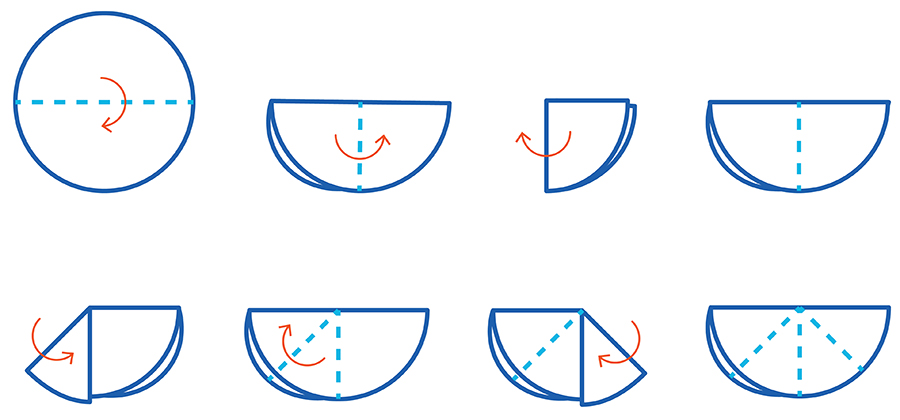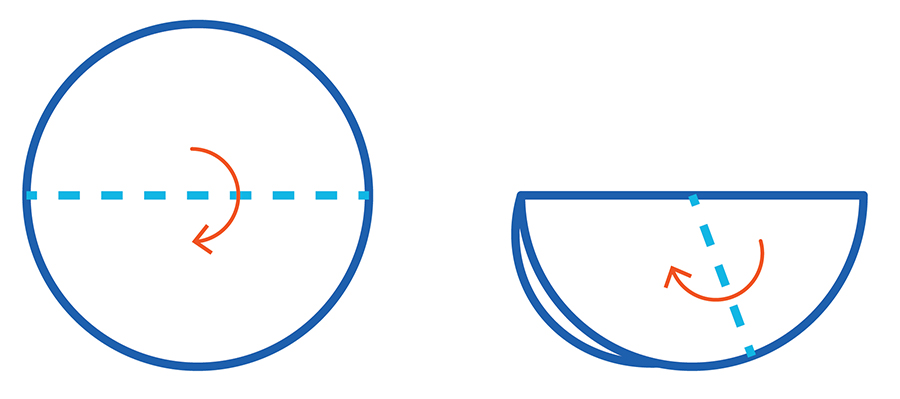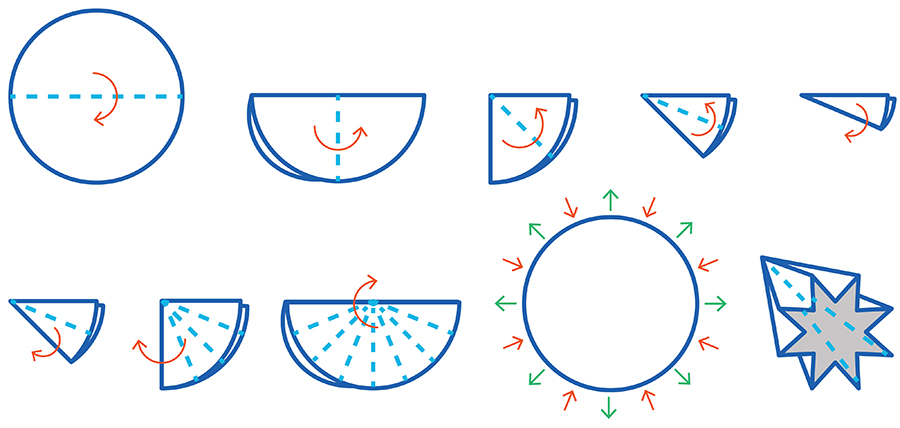Part 3 of this series describes various filter paper cone folding techniques. Read on to see the options for getting a good seal over your conical funnel.
How to fold filter paper
Following on from the last blog in this Paper Filtration 101 series, let’s look at the options for folding a filter paper cone for use with a conical funnel.
As we’ve come across previously, paper filtration appears to be a simple technique. However, there are so many options, and different people often use different methods for the same purpose. Are some methods more suitable than others, or should you just go with what you know?
In this blog, we’ll explore various filter paper folding techniques. While you may already know some of them, you might also learn a new technique that could improve your conical filtration.
The 60° filter paper funnel
Many conical filter funnels have an angle of about 60°. Folding a filter paper cone so that it beds well down into the funnel, creating a good seal when wet, makes for an efficient filtration step. Very often users will fold the paper cone with the same 60° angle. You can achieve this by simply folding the filter paper into four quadrants, creating a 60° apex when the paper is folded out into a cone.
But is the simplest option suited to every user and situation? While the aim is consistent—a perfect seal when the paper is wet—and the technique is partly down to personal preference, you might find one of the alternatives below gives you a better seal.
Filtration paper folding techniques
We’ve put together a table with some of the most common folding techniques. The choice might depend on your personal preferences, but one of these methods will hopefully help you create a paper filter cone for successful filtration. You can also watch our helpful video on gravity filtration: How to fold/pleat cellulose filter paper.
| Folding method | Comments | |
| Quadrant folded | Fold the paper into exact quadrants. | Standard, very common technique |
| Quadrant folded | Fold the paper into quadrants, then open to form a semicircle, identifying the center line. | Allows the paper to filter in a more balanced manner than standard quadrant technique |
| Quadrant folded | Fold the paper into quadrants. | Can provide a better fit when wet and loaded with precipitate |
| Quadrant folded | Fold the paper into quadrants, | Enables the rim of the filter paper cone to seal better against the glass funnel than a standard quadrant fold |
| Pleated/Fluted paper | Pleating Watch our videoHow to fold/pleat cellulose filter paper | Pleating filter papers is a very widely performed technique and offers improved flow characteristics compared to conventional quadrant folding |
Table 1. Different methods for folding a filter paper cone
Back to the filtration funnels
Hopefully these folding techniques provide useful alternatives when you next come to conical filtration.
Coming back to funnels, just like the filters, there are several options that could suit your application. Each type of funnel will suit various techniques to a greater or lesser degree. Options include:
- Precision 60° funnel or similar with a smooth glass-like surface made from stainless steel or polymers, such as polythene
- Funnels with a fluted or grooved surface
- Funnels with long or short stems of varying bore
In the next blog in our series we’ll continue looking at funnels, but specifically those for vacuum filtration with flat disc filters. Read on for guidance on choosing the right funnel for your application.
If you’ve missed a blog, or want to skip ahead, check out the other blogs in this series to learn about other aspects of filtration in more detail. Our filter selector tool can also help guide you through finding the right filter for your application.




